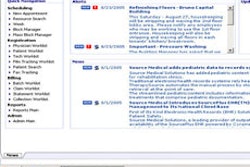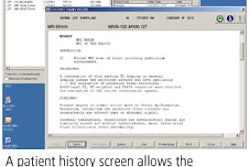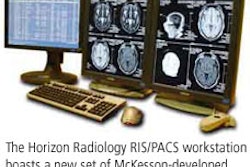AUSTIN, TX – When considering shifting to a new radiology information system (RIS), institutions need to weigh the complexity of data migration and plan accordingly, stated researchers from the Medical College of Wisconsin (MCW) in Milwaukee.
Migration of legacy information to the new system allows for continuity of patient care, as well as the continued ability to perform retrospective data analysis, said Kevin Ehlers. He discussed MCW's experience with RIS migration during a scientific session Saturday at the Society for Computer Applications in Radiology (SCAR) annual meeting.
MCW installed its legacy RIS in 1994; the RIS database contained exam histories and results for 253,000 patients. The institution is currently completing installation of a new RIS as part of an organization-wide electronic medical record implementation.
Early on in the process, MCW elected to migrate all exam histories and results to the new RIS, which was from a different vendor (Epic Systems, Madison, WI), Ehlers said.
Data migration was accomplished using a custom HL7 interface, which facilitated the migration of patient information (patient name, medical record number, date of birth, Social Security number), order information (ordering physician, patient location, order ID, patient type, account number, clinical indication), exam information (appointment time, exam description, end-exam time, accession number, exam room, and exam department), and results (report body, impression, addendum, signing radiologist/resident, signature date/time).
The legacy RIS was customized to extract the historical data elements and export them via the HL7 interface, Ehlers said. The new RIS was customized to receive, process, store, and display the new data. Patient records were created in the new RIS via a separate master patient index migration.
To account for differences in data elements between the systems, the MCW team had to map specific data elements, Ehlers said.
"This was necessary to take into account values that were not matched between systems, as well as data elements that did not correlate between systems," he said.
Outbound data was mapped by the legacy RIS, using mapping tables to populate the outbound HL7 interface with appropriate values, Ehlers said. The inbound data was also mapped by the new RIS, with mapping tables populating the new RIS database based on the value received in the interface message.
In addition, logic was created in the new RIS to ensure that the historical data was matched to the correct patient and encounter. Records that didn't match were stored in an error log for investigation at a later time, according to Ehlers.
Phased migration
The MCW team performed multiple tests prior to migrating the patient results, with the goal of validating the interface design, data mapping, and the patient and order matching logic.
In phase one, a unit test of the HL7 interface design and message format was performed, Ehlers said. Phase two involved validating the data mapping processes in both systems.
The team created 1,200 unique exam records (including all mapped data elements) in the legacy RIS database, and migrated the records to the new RIS database. The mapping errors were then identified and corrected.
In the third phase, a benchmark test was performed, realistically simulating the conversion process with a large number of production records, Ehlers said. Three separate migrations were performed in one-month increments, and the MCW team verified that the correct results were on the correct patient.
In the fourth and final phase, the actual migration was performed. Data was migrated in three-month increments, beginning with the oldest data in the legacy system, Ehlers said. The data was sent in batch mode from the legacy RIS to the new RIS.
Migrating 10 years of exam histories took approximately two months, Ehlers said. As migration or mapping errors were found, data were corrected in reverse chronological order, so that the most current data in the new system was complete and accurate, he said.
The team migrated about 1.9 million exam records, wrapping up a process that took 17 months from the initial vendor discussions to the last incremental conversion, Ehlers said. Of the records, 2.6% generated matching errors, which took 1,000 man hours to investigate and correct.
The institution encountered many challenges during the process, Ehlers said. The most significant challenge was the need to customize the legacy RIS, which required expenditure of funds and a custom HL7 interface.
"It was also a bit of a challenge to interact with two different vendors," he said. "We were often the intermediary between the two vendors, and that led to inefficiency in the process."
The design and testing of mapping tables and matching logic were also a significant challenge, Ehlers said. While the projected timetable of the process was seven months, the actual process took 17 months, he said.
By Erik L. Ridley
AuntMinnie.com staff writer
May 1, 2006
Related Reading
Part IX: Exploring PACS Secrets -- How to fix DICOM, April 20, 2006
PACS users wise to maintain DICOM integrity, April 6, 2006
Part VIII: Exploring PACS Secrets: It's broke -- Fix it, April 6, 2006
Choose image archiving solutions before data volume grows too large, January 5, 2006
Prenuptial planning eases pain of PACS divorce, June 5, 2005
Copyright © 2006 AuntMinnie.com




















